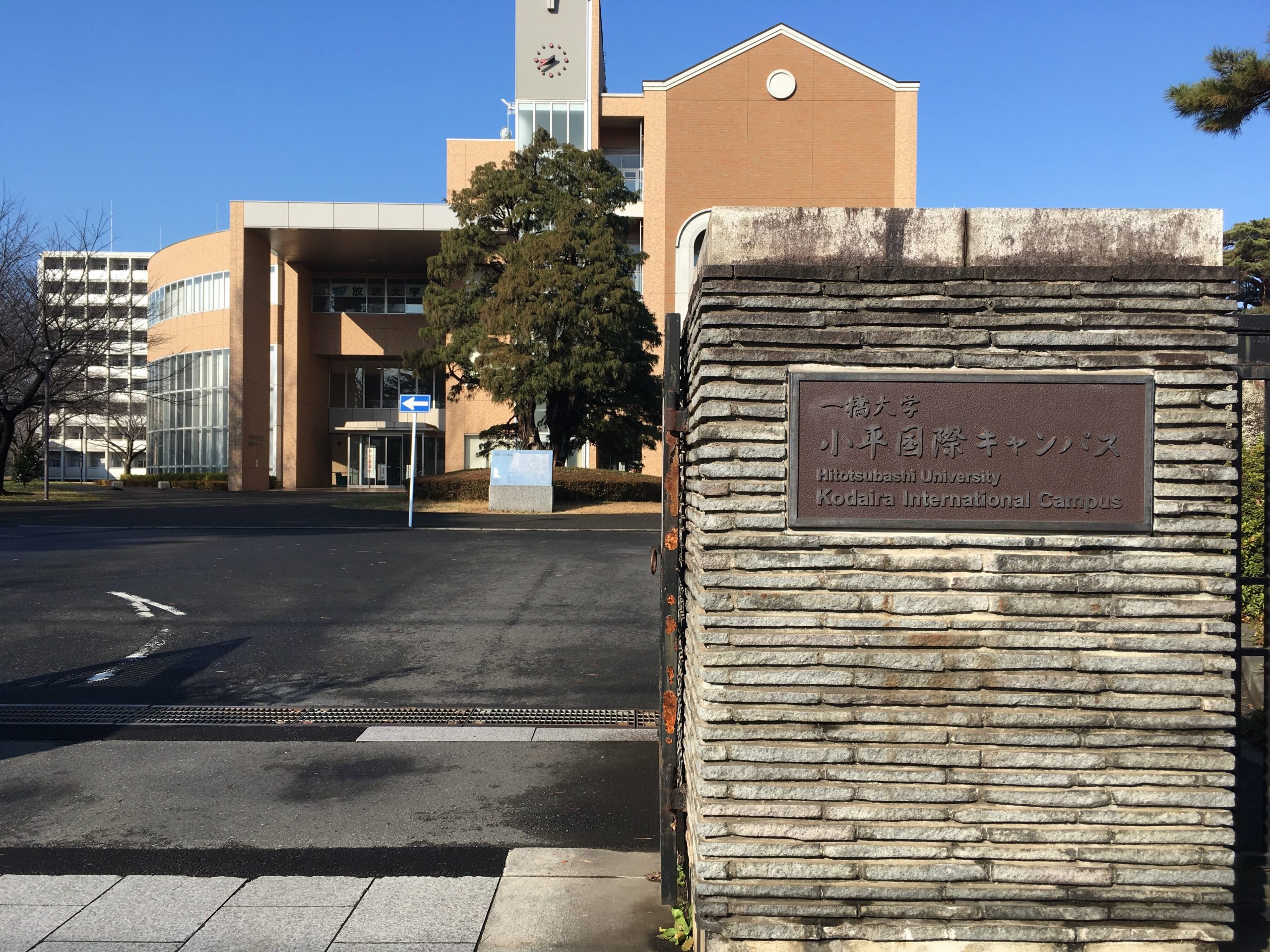FAQ

よくある質問
頻繁にISDAKに寄せられる質問を、こちらのページにまとめています。一橋大学が回答している「よくある質問」はこちら。
また、ここにはない質問をしたい場合は各種寮公式SNS (Instagram,Facebook,twitterなど)で承っています。
<全体について>
ISDAKとはなんですか?
ISDAKは International Students Dormitory Association of Kodaira(直訳すると小平国際学生団体)の略で、国際学生宿舎一橋寮に住む学生全員が所属する組織であり、寮自体の通称となっています。
ISDAKは一橋大学小平国際キャンパスの中にあり、キャンパス内にはISDAKの他にも放送大学多摩キャンパスや大学改革支援・学位授与機構など他の団体の施設もあります。
ISDAKはどこにあるのですか?
ISDAKがあるのは一橋大学小平国際キャンパス(〒187-0045 東京都小平市学園西町 1-29-1)です。主なアクセス方法としては、都心から中央線で国分寺駅まで乗り、西武多摩湖線に乗り換えて一橋学園駅で降りるのが最も便利です。東京駅からは電車を乗り継ぎ約1時間弱で、羽田空港及び成田空港からは約2時間弱となっています。
小平市って聞いたことないんですけど…
入寮するまで小平市の存在を知らない寮生がほとんどです(あと「西武多摩湖線」も聞いたことがないかと)。小平市は「都心に一番近いプチ田舎」を売りにしているようで、ブルーベリー栽培発祥の地としてブルーベリー農園が近くにあったり、玉川上水が流れていたりと自然が多く閑静な街として知られています。余談ですが、2020年11月にはテレビ東京の「出没!アド街ック天国」でも取り上げられ、寮生の中でも話題になったとかならなかったとか(番組自体は見られませんが、ランキングはこちらから確認できます)。
ISDAKはいつできたのですか?
一橋大学小平国際キャンパス自体は1996年に一橋大学が小平分校を廃止した後にできました。すでに敷地内には、主に学部1,2年生が居住する「一橋寮」がありましたが(今のS/N棟)、2002年に留学生寮として新たに「国際学生宿舎」が設立されました。ISDAKという通称は、2007年に当時の寮生たちにより採択されました。
ISDAKの特色はなんですか?
ISDAKは「寮生一人ひとりが安心でき、より居心地良く暮らせる場をつくりたい」をモットーに、寮生がお互いの多様性を受け入れ国際交流ができるような環境を作っています。学生スタッフであるRA(レジデント・アシスタント)やCA(コミュニティ・アシスタント)が中心となり、設備などのハード面及びイベントや問題解決などのソフト面の両方において寮生の皆さんのサポートをしています。
また、このISDAKにはさまざまなバックグラウンドを持った異なる学年、異なる学部、異なる大学の学生が集まっている、国内では他に類を見ない珍しい学生寮です。同じ学年の友人も作れますし、学部の先輩に相談したり、違う大学の学生と意見交換をしたり、日本語以外の言語でコミュニケーションを取れたりと、他の場所ではできないような経験が得られます。
「小平国際キャンパス」でインターネット検索をすると2008年の未成年飲酒強要事件の話題が出てくるのですが…
確かに、2008年に起きた未成年飲酒強要事件はこの小平国際キャンパスで起きた事件です。しかし、これは同じ敷地内にあった「一橋寮寮運営委員会」が「一橋寮」で起こした事件であり、「国際学生宿舎」を運営していたRAやCA組織の前身であるFL(フロアリーダー)スタッフとは全く別の組織です。この飲酒事件の影響もあり、一橋寮寮運営委員会は2012年に解体されました。
未成年飲酒や飲酒強要の危険性はRAやCAなどの学生スタッフも認識しており、プラザ管理室や一橋大学と連携しながら、一橋大学の定める「一橋大学国際学生宿舎における飲酒に関する取り決め」に則った安全なイベントを企画運営しています。具体的には、飲酒を伴うイベントを企画する際は必ず大学に事前に申請しており、酒類提供時には身分証による年齢確認を行い、運営スタッフは飲酒の強要が行われていないかをチェックすることにしています。
上記のアルコールハラスメント以外にも、ISDAKではさまざまなバックグラウンドを持った学生が集まる場所であるため、性別や人種、国籍などによる差別が発生する可能性があります。これらの差別やハラスメントは多様性理解を推進するISDAKにおいては認められないものであり、学生スタッフに対しては定期的な教育、寮生に対しては入寮時のガイダンスや定期的なワークショップイベントの開催によりダイバーシティ(多様性)教育を推進しております。
<寮生について>
今何人住んでいるのですか?
2022年11月現在、全785室中700室以上が使用されており、日本を含め35の国と地域から学生が集まっています。これは新型コロナウイルスの影響で寮生の数が減少したことによるものであり、感染拡大前の時期は50以上の国と地域から550名以上の寮生が集まっていました(2019年4月のデータ)。
一橋大学以外の他大学の学生もいると聞いたのですが…
ISDAKには一橋大学の学生の他にも、近隣の3つの国立大学(東京学芸大学、電気通信大学、東京農工大学)の留学生が居住しています。2021年1月現在、新型コロナウイルスの影響で留学生の数が減少しているため、3大学合わせて留学生の数は100人以上となっています。
留学生はどれくらい住んでいますか?
2022年11月現在、日本人学生と留学生の比率は4:6となっています。
一口に留学生といってもその区分はさまざまで、大学の正規課程に所属している「正規留学生」や、半年や1年間のみの所属となる「交流学生」、正規課程に所属する前の段階である「研究留学生」などに分けられます。
男女比はどれくらいですか?
男女比はおよそ半々となっています。
部屋割りはどのようにして行われていますか?
部屋割りは一橋大学が行っており、学生スタッフは部屋割りに対する権限がありません。部屋割りは学年や所属が偏らないように配置されるとのことです。ただし、入居に関し特別な事情等がある場合は申請時に記入することもできるようです。
<部屋について>
共用タイプと個室タイプって何が違うんですか?
基本的な設備はほとんど一緒です。共用タイプは6室が1ユニットとなって、内廊下を使いキッチンやシャワー室に行くイメージです。個室タイプは部屋の中に玄関、靴箱、洗面台、トイレがあり、その分部屋も少し広くなっていますが、キッチンやシャワー室は外廊下をでたところになるので一長一短ですね。
清掃は入るのですか?
キッチンやシャワー室、共用タイプのトイレなどの共用部は清掃業者が簡易清掃を行っていますが、基本的には寮生自身で協力して清潔に保つことになっています。また、個室内には清掃が入りません。つまり、個室タイプの部屋の中にあるトイレなどは自分で掃除することになります。頑張ってください。
ゴミ捨てはどのようにしているのですか?
共用部に大きめのゴミ箱があり、個室で出たゴミを小平市のルールに基づいて分別して捨てています。そのゴミを清掃業者が平日毎日回収しているので、小平市のゴミ回収日によらずゴミが捨てられて便利です。
個室内の備え付けの家具はなにがありますか?
| ワードローブ | 洋服掛けと、引き出しがセットになっています。 | ||
| ベッド、ベッドマットレス | ベッドマットレスサイズは幅100cm 長さ210cm 厚み20cmと、特殊サイズのためサイズの合うシーツなどが少ないです。上に敷布団を敷いて使用するのもおすすめです。枕元にベッドランプとコンセントがついています。 | ||
| レースカーテン | 入寮時には白いカーテンが付いています。 A,B,C,E棟:縦198幅100cm✕2枚 D,N,S棟:縦176幅100cm✕2枚 | ||
| 机、イス、デスクランプ、袖机 | 袖机はキャスター付きです。 | ||
| 本棚 | |||
| エアコン | |||
| 冷蔵庫 | 個室は85リットル程度の冷凍・冷蔵庫があります。補食室(キッチン)には365リットル程度の冷凍・冷蔵庫があります。 | ||
| 鳩ネット | 各棟のベランダ側に鳩ネットが設置されています。 | ||
| 内線 | 寮内の各棟入口、各個室、プラザ管理室、守衛室につながる無料の内線です。 | ||
| インターネットLAN差込口 | インターネット契約は一橋大学が一括で行っています。費用は寄宿料に含まれます。LANでパソコンを直接接続しても使用できます。必要であればWi-Fiルーターをご購入下さい。 | ||
| テレビアンテナ差込口 | |||
| トイレ ※個室タイプのみ | 温水洗浄便座付き | ||
| 洗面台 ※個室タイプのみ | 洗面台、鏡、小物置き、ライト お湯は出ません。 | ||
| 靴箱 ※個室タイプのみ | 約10足程度入ります。 |
個室内や共用部の設備・備品については、一橋大学のウェブページにも記載がされているので、そちらもご参照ください(リンクはこちら)。
<入寮について>
入寮日はいつですか?
一斉入寮日は一橋大学が決めているので、最新の情報は一橋大学のホームページをご確認いただければと思います。イメージとしては、一斉入寮日が指定され(例えば2021年春の場合は2021年3月25日)、その日に新入寮生が一斉に引っ越しをする感じです。一斉入寮日にどうしても外せない用事がある場合は、一橋大学に連絡することで調整も可能です。
引越しはどのようにすればいいですか?
ISDAKは大型家電や大型家具が備え付けで、大掛かりな引っ越しをすることはないため、大体の新入寮生は引越業者に依頼せず家族などに運搬を頼み自家用車で来る場合が多いようです(1人で必要最低限の荷物を持ってくるだけの寮生もいます)。
入寮時に持っておいたほうがいいものはなんですか?
入寮時に絶対持っておいた方がいいものは以下のようなものが考えられます。
- 寝具 … 一応ベッドパッドは入寮時に支給されるのですが、枕がないと大変かもしれません。
- 衣類 … 最低でも2日分の着替えと下着はあった方がいいかもしれません。
- ボディソープ、シャンプー、バスタオル … 1日くらいお風呂に入らなくてもなんとかなるものですが…持ってきた方が無難でしょう。
- トイレットペーパー … 共用タイプの場合はトイレも共用のため、トイレットペーパーがあるケースが多いですが、個室タイプだと自分で用意しなければいけないため、念のため持っておくことをお勧めします。
- 体温計とマスク … 新型コロナウイルス感染拡大を抑えるためご協力をお願いします。
- 顔写真(縦4cm×横3cm程度) … 入寮時の書類に貼付するためです。忘れた場合、近くの証明写真機がないのでかなり大変です(今はスマートフォンで撮影し、コンビニエンスストアで印刷する方法もあります)。
逆に持ってこなくていいものはありますか?
すでに備え付けられている家電や家具(ベッド、マットレス、冷蔵庫、洗濯機など)は持ってきても置き場所がないので持ってこないでください。室内に置けるハンガーラックは置いている寮生も多いのですが、サイズによって部屋を大きく圧迫してしまうため、部屋の大きさを見てから判断した方がいいでしょう(そもそも備え付けのワードローブの中にもハンガーをかけるレールはあります)。
また、以下のものは入寮後に必要かどうかご判断されることをお勧めします。
- 食器、鍋類 … どれくらい自炊をするかによって、必要な食器の内容や量が分かってきます。また、場所によってはフライパンなどの調理器具をシェアしているようなフロアもあるので、入寮してから買うものを決めるといいでしょう。
- 洗剤 … 場所によっては衣類洗剤もシェアしているようなフロアもあります。
- 個室内ドレープカーテン … レースカーテンは各室備え付けでありますが、遮光性の高いドレープカーテンは各自で準備する必要があります(部屋によっては朝日や西日が強いです)。ただし、前に住んでいた寮生が好意で部屋にドレープカーテンを残したまま退寮することも多いので、部屋を確認されてからご購入を検討されることをお勧めします。
- 物干し竿 … ドレープカーテン同様前に住んでいた寮生が好意でベランダに残したまま退寮することが多いです。
- 自転車 … 電車で通学する場合はなくても困らないですし、ISDAK内でも前寮生が寄付した自転車を新入寮生に譲渡する制度があります。必要になった際に、ISDAK近くの自転車屋やホームセンターで購入する寮生もいるようです。
- 個人用家電(テレビ、炊飯器等) … テレビについては、過去にフロアで購入し共用部に置かれている場合があるので、ずっと自室でテレビを見たいという人じゃない限りあまり必要ないかもしれません(大学生になるとテレビって見なくなるんですよ…)。炊飯器についても、フロアメイトでシェアできるものが置かれていたり、持っていてもあまりお米を炊かない寮生もいるなど、あまり必需品ではないといえます。
入寮前に荷物を預かってもらうことはできますか?
管理棟などには荷物を置くスペースがなく、管理人などが寮生の代理として荷物を受け取るとトラブルの元になるため、入寮前に荷物を受け取ることはできません。
入寮時の荷物受け取りについては、必ずご自身が入寮を済ませ在室している時間帯に指定した配送をお願いいたします。配達業者に負担をかけないためにも、ご協力をお願いします。
車で搬入することはできますか?そのとき保護者は入れますか?
引っ越しのために一時的に入構することは可能です。当日、正門の守衛所で受付を行って下さい。なお、日をまたいでの駐車はご遠慮下さい。保護者様についても宿泊を伴わない入構でしたら可能ですが、新型コロナウイルスの感染拡大防止のため短時間での入構をお願いします。
<生活について>
一橋大学の国立キャンパスにはどうやって行くのですか?
寮生の大半は自転車で行くようです。自転車で一橋大学に行くと片道約5キロメートルで、所要時間はおよそ20〜25分です。国立に着く直前に長い下り坂があるため、行きは快適ですが帰りは少し大変かもしれません。
電車では、西武多摩湖線で一橋学園駅から国分寺駅に行き、そこから中央線に乗り換えて国立駅に行く方法が主流です。所要時間はおよそ30分ほどで、自転車に比べると快適ですが、中央線は遅延が頻発する路線であり、西武多摩湖線も10分に1本しか運行しない路線なので、時間に余裕を持って寮を出発することをおすすめします。
駐輪場や駐車場は使えますか?
駐輪場は寮生が自由に使え、かつ場所もかなり多いので気軽に自転車を停められると思います。小平近辺は電車やバスのカバー率があまり高くなく、自転車があると行動範囲がグッと広がるため、持っておいて損はないでしょう。
駐車場については、荷物の運搬など一時利用で入構することは可能ですが、日を跨いだ長期の駐車はできません。ご了承ください。
近くにスーパーマーケットはありますか?
一橋学園駅前に「あまいけ」がある他、北口の商店街に「Big-A」、国分寺駅に行く途中にある「ロピア」や「サミット」など大手のスーパーマーケットが何軒かあります。余談ですが、「サミット」にはホームセンターの「コーナン」も隣接しており、何かと重宝するお店です。
近くに病院はありますか?
徒歩7分くらいのところに総合病院である「一橋病院」がある他、徒歩圏内のところに小さいクリニックが何件かあります。
食事はどうしてますか?
寮では食事の提供がないため、自炊をするか外食をすることになります(敷地内に「カフェテリア」がありますが、これは小平キャンパスで授業が行われていた頃の名残で現在は営業していません)。
自炊については近辺にスーパーマーケットも何件かあるので、食材を買ってきて自分で調理する寮生も多いようです。ただ一つ注意点として、寮のコンロがIHコンロであるため、直火専用のフライパンを買ってきても使えないことが挙げられます(IKEAで安いと思って買ったフライパンが直火対応で使えなくて泣きを見た経験があります)。
外食については、寮近辺に飲食店がたくさんある他、国立で授業後に食事を済ませてから寮に戻る寮生も多い印象です。電車での通学の場合、国分寺駅で乗り換えることになるため国分寺駅で食事を摂るのもいいでしょう。
洗濯はどうしてますか?
各フロアや共用ユニット内に備え付けの洗濯機や乾燥機があるので、そちらをご利用ください(コイン式ではなく無料で利用できます)。洗濯機はおよそ7kgのサイズで、一人暮らしであれば週2回の洗濯で十分でしょう。乾燥機はガス式で、5kgサイズです。梅雨時や冬場に重宝します。
洗濯機や乾燥機はいつでも使用できますが、週末などは使用者数が多いため混雑する傾向にあります。また、深夜の洗濯は騒音の原因ともなり得るので注意してください。
また、近くにコインランドリーがあるため、シーツなどの大型のものやスニーカー等の洗濯で利用する寮生もいるようです。
掃除はどうしてますか?
各共用部に紙パック式の掃除機があるため、それを借りて室内で掃除機をかける寮生もいます。ただし、そもそも床面積が大きくないので、定期的にフローリングワイパー等で掃除すれば大丈夫でしょう。より大変なのはトイレで、よくほったらかしにされがちです。トイレ用洗剤とトイレブラシ等でこまめに掃除するよう心がけましょう(プラザ管理室に行けば掃除の相談に乗ってくれますよ)。
シャワー室しかないように見えますが、お風呂はあるのですか?
残念ながら共用タイプでも個室タイプでもシャワー室だけとなっており、浴槽はありません。冬場はかなり堪えるものがあります。
本来、徒歩圏内に「小平浴場」があったのですが最近閉店してしまい、お風呂に入る手段はスーパー銭湯のみになってしまいました。ISDAKから約3キロメートルのところに「テルメ小川」、約4.5キロメートルのところに「おふろの王様 花小金井店」があり、いずれも自転車圏内に位置しているのですが、冬場はお風呂に入っても帰りの自転車で湯冷めしてしまうので利用者はあまりいない印象です。
月々の料金はどんな感じですか?
ISDAKで支払う料金は、以下の通りです。
①寄宿料:いわゆる家賃です。単身室の場合は月24,000円です。
②共益費:設備や施設の運営および維持に使われるお金で、月2,900円です。
③ISDAK費:学生スタッフが寮内の設備やイベント運営のために使うお金で、月2,000円です。
④水道代:定額となっています。
⑤電気代(個室部分):自分の部屋で使用した分の電気代です。
⑥電気代(共用部分):キッチンやシャワー室など共用部分で使われた電気代を、寮生で頭割りした電気代です(シャワーや乾燥機のガス代もここに含まれます)。
④〜⑥の光熱費は使用分に応じて金額が変動するため一概には言えませんが、年間で平均すると1ヶ月あたり10,000円前後となっています。
個室内に調理器具は置いてもいいですか?
調理器具の種類にもよりますが、個室内のブレーカーの許容電流量がそこまで高くないことや、調理で匂いが壁紙につくことなどを考えるとあまりお勧めはできません。イメージとしては、簡単な電気ポットやコーヒーメーカーは室内に置く人が多く、ミキサーや炊飯器などはキッチンに置いて調理する人が多いようです。
保護者の訪問は宿泊は可能ですか?
規則により、家族を含めた寮外者の訪問は認められているものの、宿泊については防犯の観点から固く禁じられています。ISDAKの近辺や国分寺駅の近くに宿泊施設がありますので、そちらをご利用ください。
なお、2021年3月現在新型コロナウイルスに関する一橋大学の方針により、小平国際キャンパスは寮生などの関係者以外は入構禁止となっております。そのため、保護者の方々も入構できなくなっております。あらかじめご了承ください。
そのほかに気をつけたほうがいいルールはありますか?
入居時には「入居誓約書」に署名してもらい、そこに書かれているルールを遵守することになります。以下に入居誓約書に書かれているルールをいくつか抜粋します。
- 居室内などでの喫煙は電子タバコを含めて禁止です。喫煙は指定された場所で行ってください。
- ペットの飼育は禁止です。
- 貴重品管理は自己責任で行います。紛失物があった場合も、管理室・守衛室・大学側の責任は問いません。
- 寄宿料、光熱水費等を所定の期日までに納入します。3か月以上滞納した場合は退去処分となります。
- 居室内の破損・汚損がある場合は自己責任にて弁償し、これを原状に回復する義務があります。
- 騒音など近隣・隣室等への配慮を欠く行為はしないでください。
門限はありますか?また、外泊は連絡する必要はありますか?
門限はありません。平常時は22時以降正門の通用口のみが使用できます(新型コロナウイルスの流行により、現在は常時正門以外は閉門しています)。余談ですが門限よりも大切なのは最寄駅である一橋学園駅を通る西武多摩湖線の終電時間で、普通の路線よりも終電時間が早いためその時間が実質門限だと捉える寮生も多いようです。
外泊については連絡する必要はありませんが、2週間以上寮を不在にする場合、プラザ管理室にあらかじめご連絡ください。これは何かあった際にプラザ管理室と寮生のコミュニケーションを取りやすくするためです。
インターネット環境はありますか?
ISDAK内においてインターネットは一橋大学が一括で契約しているため、個別に寮生が契約する必要はありません。接続方法は以下の2通りが挙げられます。
①キッチンなどの共用部分で、備え付けのWi-Fiルータに接続する方法
スマートフォンやタブレット等をお持ちであれば接続できます(Wi-Fiのパスワードは入寮時に提供されます)。何も設備がいらないので便利な反面、共用部分でしか接続できない他、ルーターの性能により複数人が同時に接続すると速度が落ちやすいため、オンライン授業などの視聴には向いていないかもしれません。
②個室内で接続する方法
LANケーブルやWi-Fiルータなどの設備を自分で購入する必要がありますが、自室内で安定して接続できるため、できるだけ自室内でのインターネット接続をお願いしています。設備に関して話すと長くなるので、とりあえずLANケーブルは「カテゴリ6A」か「カテゴリ7」、Wi-Fiルータについては「11ac」と書かれているものを買えば大丈夫かと思います。詳しくは、家電量販店などにお問い合わせください。
また、上記の2つの方法の他にも、プラザ棟でも無料のWi-Fi設備があり、会議室などもオンライン授業受講用に開放しているため、そちらでオンライン授業を受講する寮生も見かけます。自室だと集中できない場合や雰囲気を変えたい場合にお勧めです。
手紙や荷物はどのように受け取るのでしょうか?また、不在時に荷物を代わりに受け取ってもらえますか?
各棟の1階には部屋ごとのポストがあり、各室違う暗証番号で施錠されています(暗証番号は入寮時に通達されます)。宅配便などの大型の荷物については、配達業者が各棟の入口にある内線電話で個室に電話をし、寮生が棟の入口まで行って荷物を受け取る方式をとっています(防犯上の観点から配送業者は各棟の中に入れません)。
<学生スタッフについて>
RAとかCAってなんですか?
いずれも大学に所属する学生でありながら、寮生のサポートをする学生スタッフの名前です。RAは Resident Assistantの略で、主に個室タイプのフロア運営を任されているほか、寮全体の運営やイベント企画を担当しています。CA は Community Assistantの略で、主に共用タイプのユニット単位でのフロア運営を任されているスタッフです。皆さんが寮生として入居する際、必ず自身が住むフロアに担当のRAかCAがいることになっています。
RAやCAをやってみたいんですがどうすればなれますか?
一橋大学の学生については年に2回、春採用(11月頃募集、翌4月採用)と秋採用(6月頃募集、9月採用)で学生スタッフを募集しています。募集時期や募集人数については毎回異なるため、一橋大学のホームページをチェックしてください(リンクはこちら)。
他の大学の学生については、大学によって募集時期が違ってくるため、所属大学のホームページをご確認ください。
ISDAK費ってなんですか?
ISDAK費とは、ISDAKに住む寮生全員が払う必要のある費用で、RAが使用用途を決定しています。各フロアで使用できるフロアマネーの配布や、寮生全体が使う施設の維持費、寮内で行われるイベントの運営費などに充てられています。毎年12月ごろに次年度の予算が作られ、寮生の審議を経た後に執行される予算です。
<新型コロナウイルスについて>
寮内ではどのような感染症対策をとっていますか?
ISDAK内では、寮内メーリングリストなどによる定期的な注意喚起をはじめ、各共用部にアルコールジェルを設置し、共用部を使用する際はマスク着用をお願いするなどの対策をとっています。また、一橋大学の新型コロナウイルスに関する活動指針に基づき、現在寮生及び関係者以外の小平国際キャンパスへの入構を制限しています。
寮生が新型コロナウイルスに感染した場合、どのような対応をしますか?
ISDAK内で新型コロナウイルス感染者が発生した場合は、保健所及び一橋大学の保健センターの指示のもと、一橋大学が対応することになります。詳細に関しては一橋大学にお問い合わせください。
寮内のイベントはどのように運営されていますか?
本来、ISDAKでは寮生が入寮や退寮をする時期に、全寮生を招いて立食パーティを行う「4大パーティ」や、毎月寮内で実施しているその他のイベントが開催されています。
最終更新日:2022年11月21日
文責:広報班